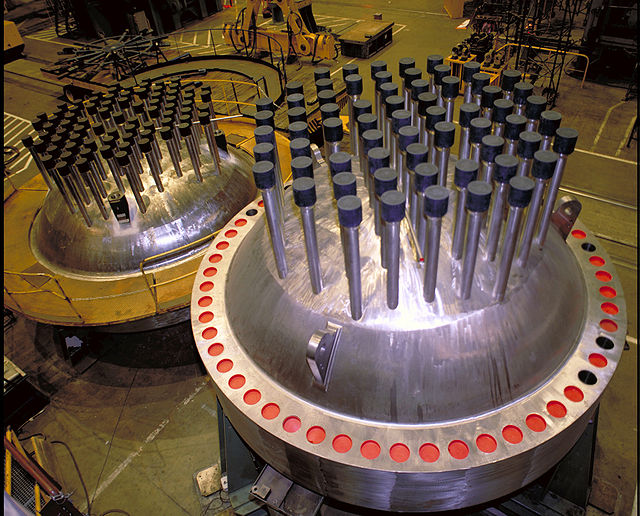The APR-1400 is an advanced pressurized water nuclear reactor designed by the Korea Electric Power Corporation (KEPCO). Originally known as the Korean Next Generation Reactor (KNGR), this Generation III reactor was developed from the earlier OPR-1000 design and also incorporates features from the US Combustion Engineering (C-E) System 80+ design. Currently in South Korea there are 3 units in operation, and 3 units in construction. Three units are completed and in commercial operation in the United Arab Emirates at Barakah, with one more under construction at the same plant.
Unit 1 and unit 2 of Barakah nuclear power plant APR-1400 reactors in the United Arab Emirates
Pressurized water reactor
A pressurized water reactor (PWR) is a type of light-water nuclear reactor. PWRs constitute the large majority of the world's nuclear power plants. In a PWR, the primary coolant (water) is pumped under high pressure to the reactor core where it is heated by the energy released by the fission of atoms. The heated, high pressure water then flows to a steam generator, where it transfers its thermal energy to lower pressure water of a secondary system where steam is generated. The steam then drives turbines, which spin an electric generator. In contrast to a boiling water reactor (BWR), pressure in the primary coolant loop prevents the water from boiling within the reactor. All light-water reactors use ordinary water as both coolant and neutron moderator. Most use anywhere from two to four vertically mounted steam generators; VVER reactors use horizontal steam generators.
Nuclear Regulatory Commission image of pressurized water reactor vessel heads
Rancho Seco PWR reactor hall and cooling tower (being decommissioned, 2004)
PWR fuel bundle This fuel bundle is from a pressurized water reactor of the nuclear passenger and cargo ship NS Savannah. Designed and built by Babcock & Wilcox.




